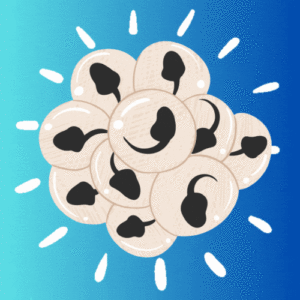
Learn about metamorphosis in amphibians and what factors can influence it.
What is Metamorphosis?
Metamorphosis refers to the transformation of a larva to its adult form. This process includes physiological, morphological, biochemical and even behavioural changes1. Many animals undergo metamorphosis, like the butterfly.
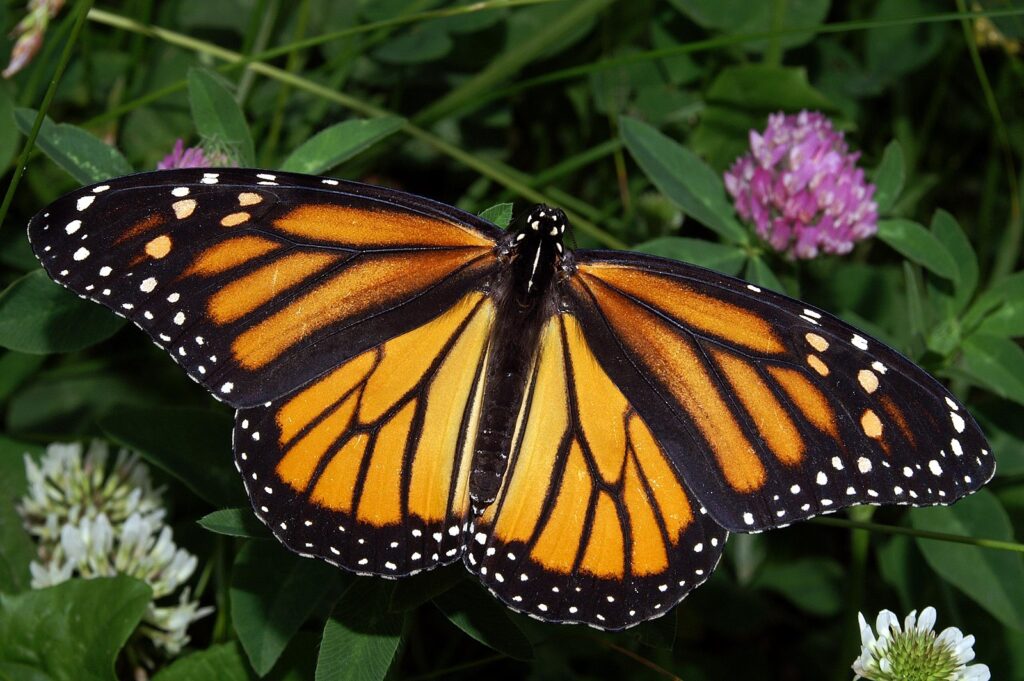
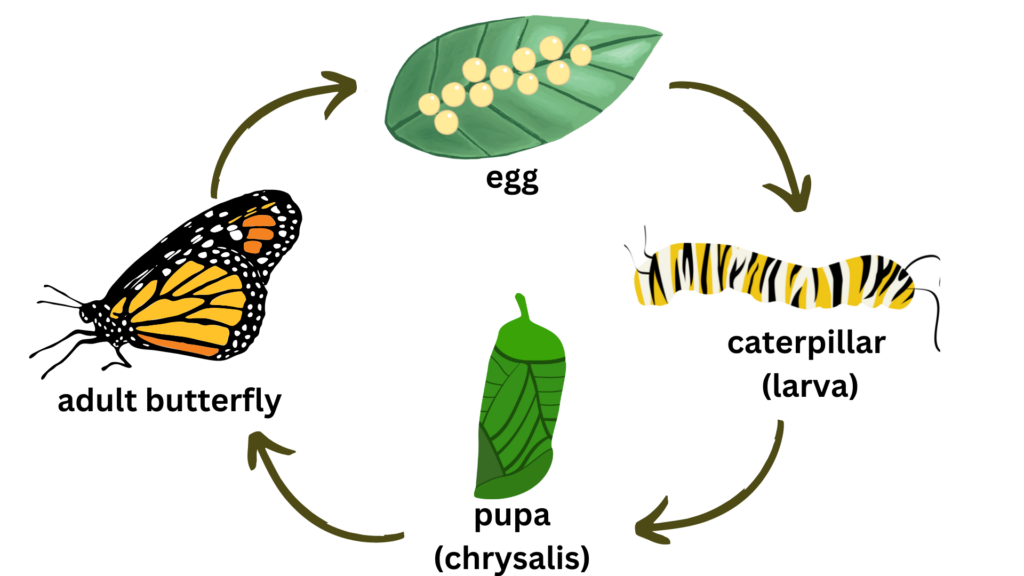
But perhaps the most well-known of metamorphic cycles is that of amphibians.
Metamorphosis in Frogs
Metamorphosis in frogs is one of the most dramatic examples seen the animal kingdom. For most frogs, metamorphosis begins after hatching and they develop from young tadpoles into adult frogs. Take a look at these animations to show how an egg develops into a tadpole, and how a tadpole develops into a frog.
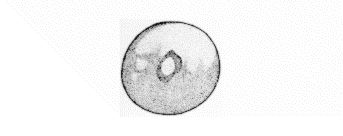
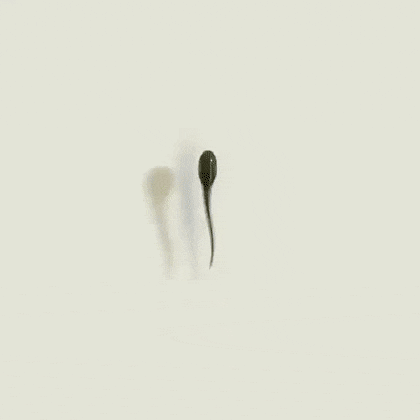
The common metamorphic cycle is also summarised below:
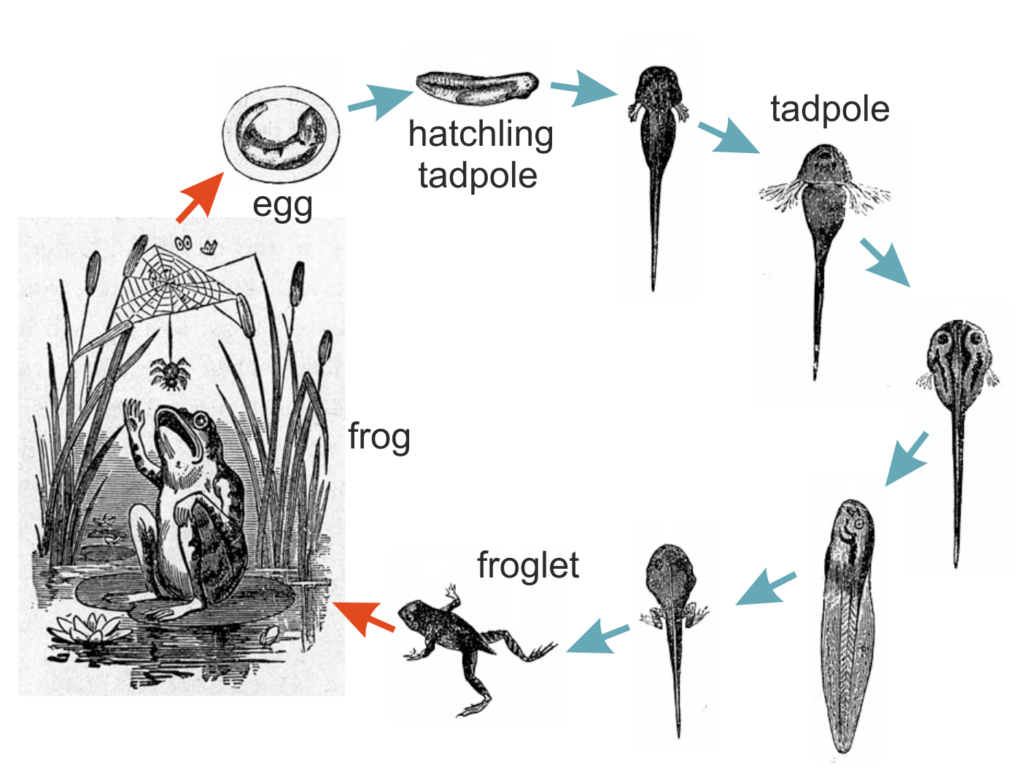
Frogs undergo massive physiological and morphological changes during this transformation to prepare them for adult life. All these changes require vast plasticity of their tissues and nervous systems1. [image compare?]
Some existing features are remodelled to optimise their usage for adult life1. Click on the buttons below to find out the different body systems change.

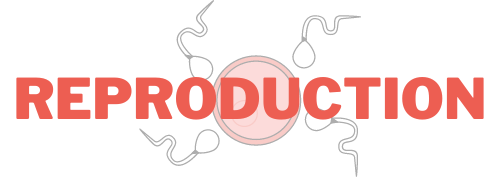

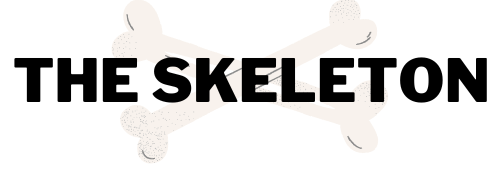

Some features are newly generated. New cells grow and develop in order to develop entirely new organs to support adult life. For example, legs and lungs are newly grown during metamorphosis and replace the tail and gills, which are absorbed back into the body. This process is highly controlled and each stage is carefully timed in sequence.
Watch the video below which summarises the metamorphosis of the frog.
Metamorphosis of Movement
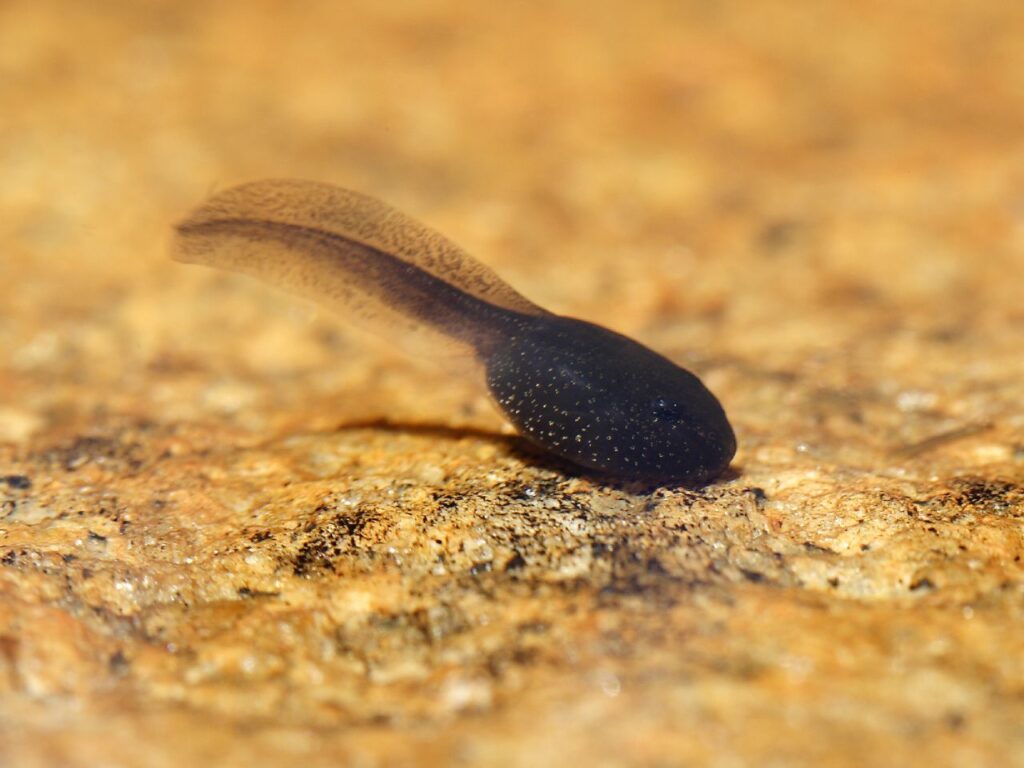
The metamorphosis of the locomotor system is especially complex. A tadpole lives an aquatic lifestyle and so their muscles and neural networks are optimised for tail swimming. Within its spinal cord, a tadpole has a network of neurons that specialise in creating rhythmic and alternating signals that tell the muscles in the trunk and tail to sway left and right, allowing it to swim through water.
by Miika Silfverberg
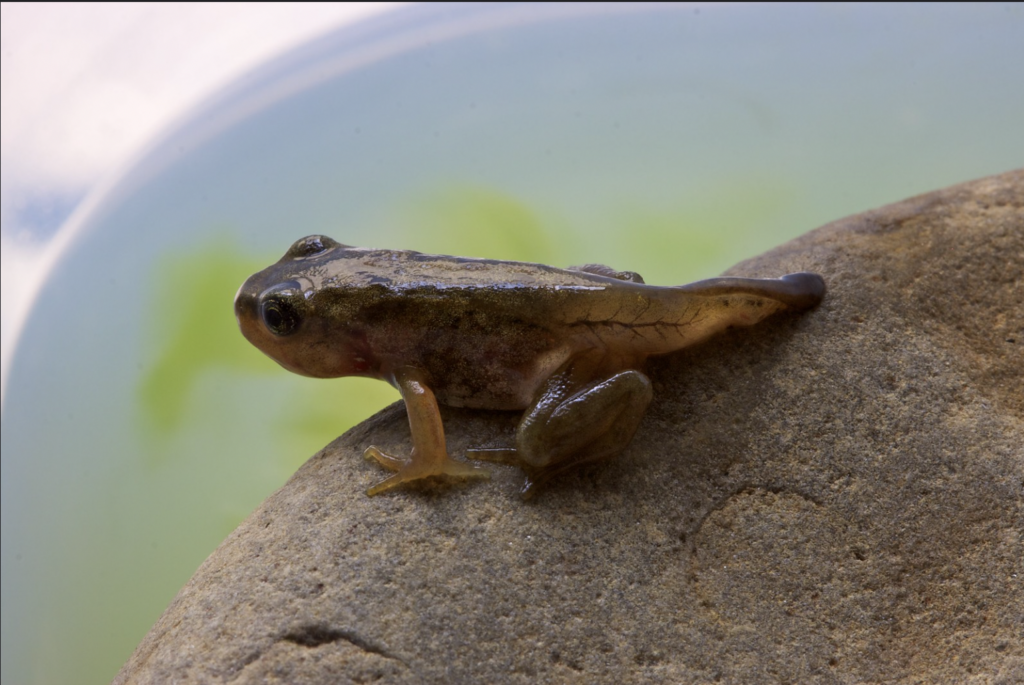
When the tadpole begins to metamorphose, it must prepare for an amphibious lifestyle. As the tadpole begins to develop legs, a network optimised for limb movement must form. The network becomes more complex as it links to extensor and flexor muscles in the legs, which activate in an alternating and coordinated fashion. This allows the frog to move and kick their hind legs synchronously to swim and jump through both aquatic and terrestrial environments.
by Steve Hodgson
You can read about the metamorphosis of the locomotor system in more detail on a dedicated page, coming soon!
How is Metamorphosis Controlled?
Metamorphosis is controlled by thyroid hormones, produced by the thyroid gland which is present in all vertebrates, including humans. In humans, thyroid hormones help regulate our metabolism and contribute to healthy growth and development.
In frogs, thyroid hormones activate gene expression in cells that allow them to undergo development processes to complete metamorphosis7.
Increasing concentrations of hormones circulate through the body in the blood as metamorphosis progresses. This is carefully controlled in the body to ensure that all adult features are fully developed and functioning before the larval features are degraded1. For example, the growing tadpole must make sure their lungs are fully developed for breathing air before they can begin resorbing their gills, or else they couldn’t breathe!
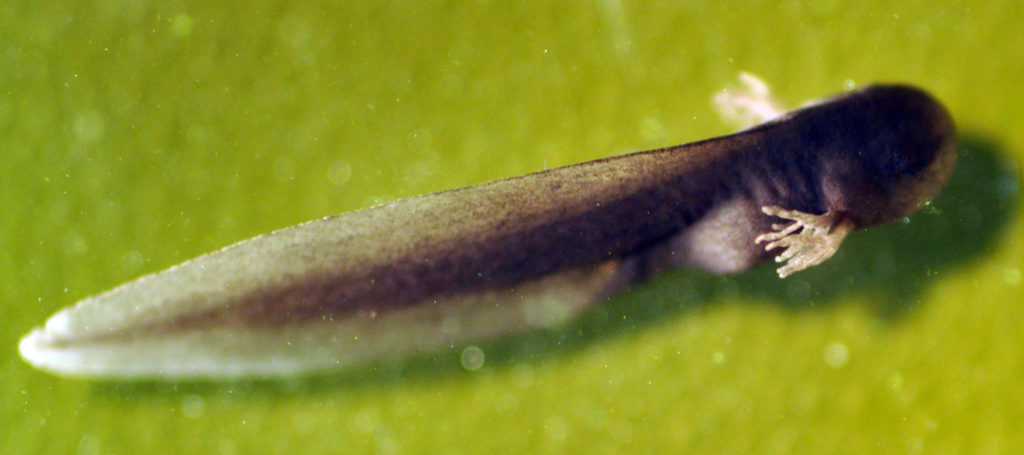

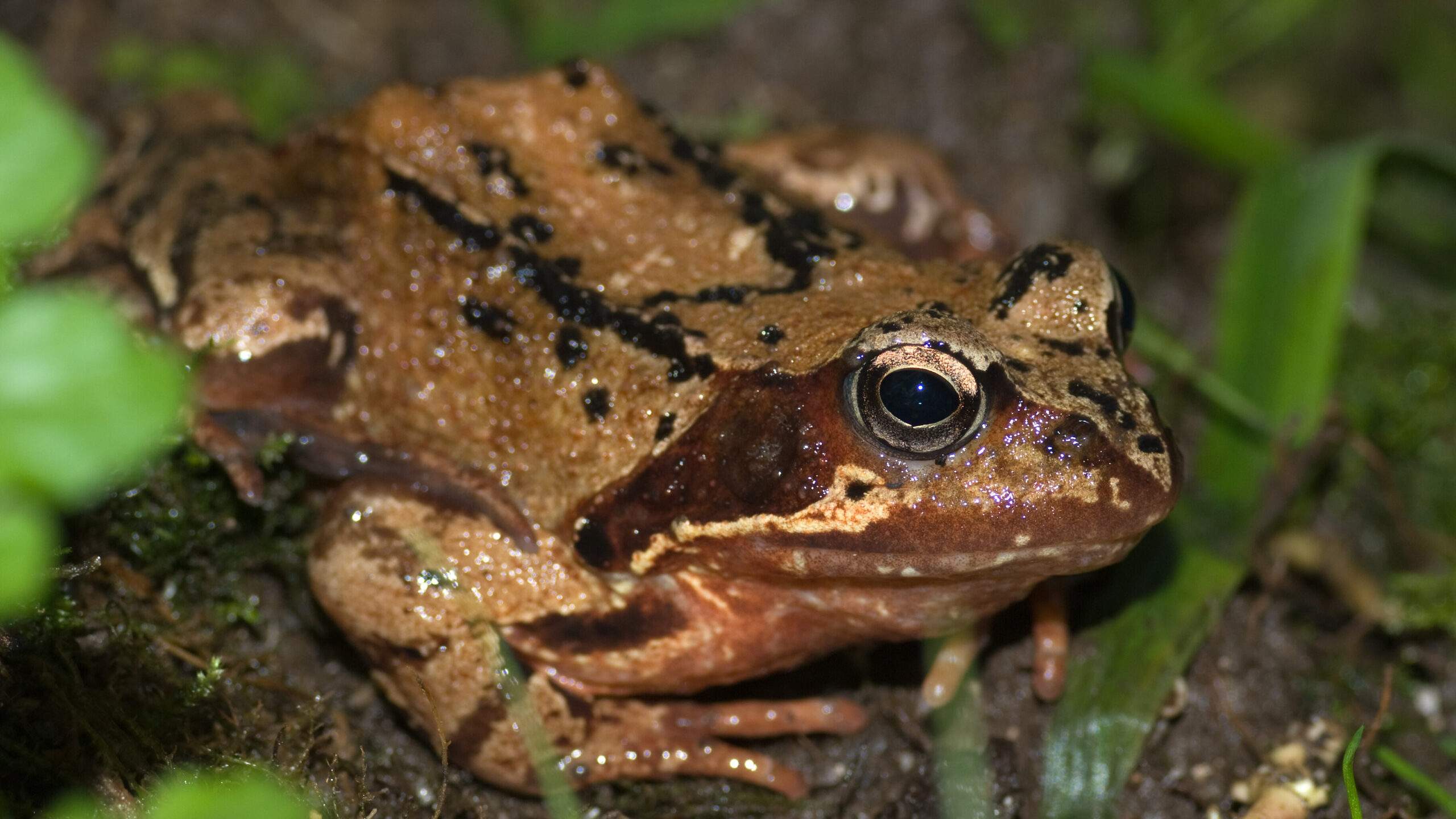
Without sufficient thyroid hormones or if something is interfering with the body’s response to the hormones, then metamorphosis does not occur. You can read about how thyroid hormones controls metamorphosis in more detail on another page, coming soon!
Different Strategies in Amphibian Metamorphosis
While frogs such as the Wood Frog, Rana sylvatica and the American bullfrog, Lithobates catesbeianus (previously Rana catesbeiana) exhibit the common type of metamorphosis, not all frogs develop this way.
The Puerto Rican coqui tree frog, Eleutherodactylus coqui undergoes direct development, where the egg directly develops into an adult organism, with no intermediary free-living larval stage2. Unlike the common frog, metamorphosis occurs entirely inside the egg and the coqui tree frog hatches as fully formed tiny froglets, often with small tails.
It has been suggested that a combination of environmental pressures and development adaptations encouraged the evolution of direct development2.
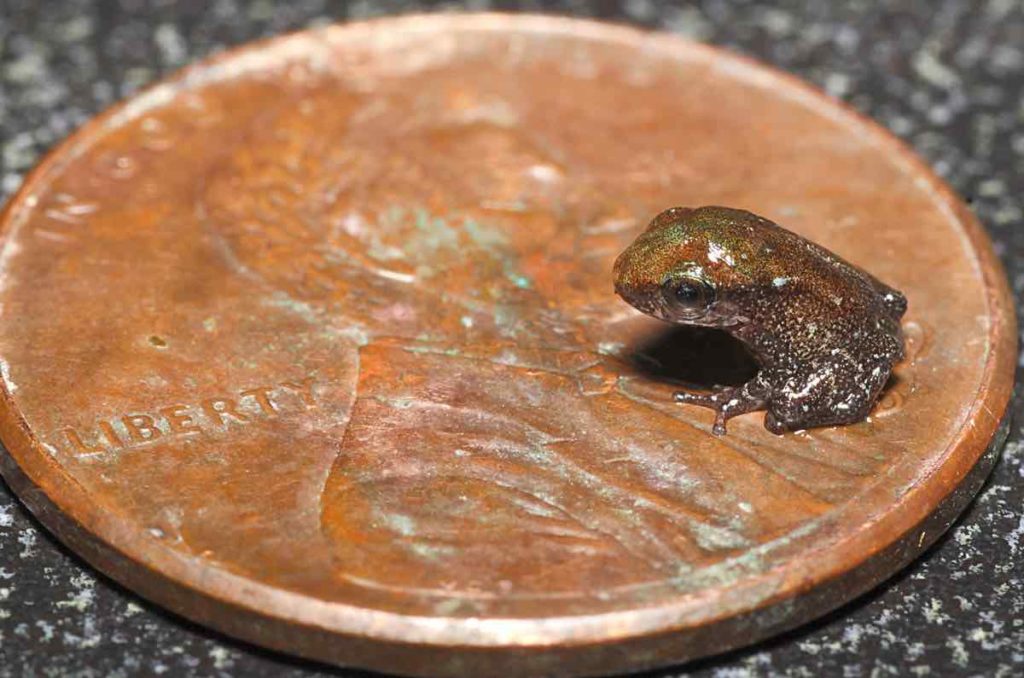
Another type of development in amphibians is known as paedomorphosis. This is where juvenile traits such as external gills or the tail are kept by the amphibian even after it develops into a sexually mature adult3. Several amphibians exhibit this type of development like salamanders or newts, but the most famous is in the Mexican axolotl, Ambystoma mexicanum.
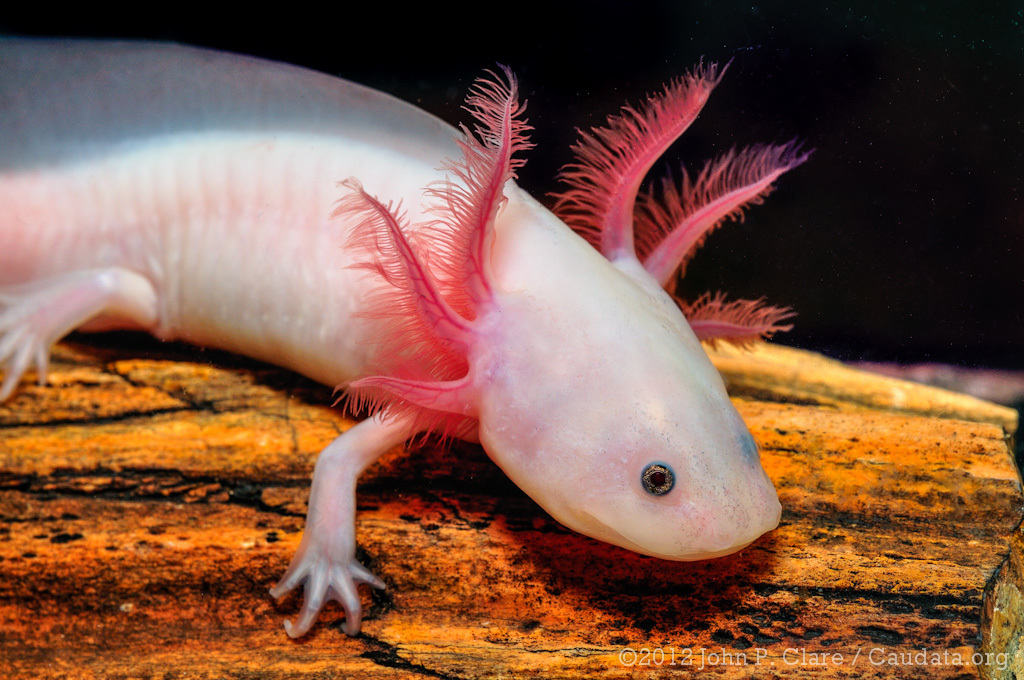
Paedomorphosis in the axolotl is a result of neoteny, which describes an extension of the juvenile stage into adulthood4. Axolotls have faulty pituitary glands which do not release the hormones necessary to stimulate the production of thyroid hormones in the thyroid gland5-p.743. This fault decreases the levels of circulating thyroid hormones and so the axolotl does not undergo normal metamorphosis. This leads to the axolotl becoming sexually mature at a juvenile stage. It also retaining juvenile characteristics, such as external gills and a tail fin and lives a fully aquatic lifestyle throughout its life.
Curiously, an axolotl can undergo metamorphosis when it is injected with thyroid hormone in a lab. You can read here to learn more about hormonal control of metamorphosis and the axolotl.
When Metamorphosis Goes Wrong
Metamorphosis is a highly controlled process in the frog, and there are many factors that can influence it.
Varied Temperature
In warmer water, tadpoles metamorphose more quickly, causing adult frogs to be smaller.
In colder water, the spinal cord development in larvae is affected and tadpoles develop a more effective escape response. This is called cold-hardening and gives the tadpoles a swimming advantage in their environment after they hatch6.
Food Availability
Tadpoles not only need a sufficient amount of food to survive, but to undergo normal metamorphosis as well.
When there is lower food availability, tadpoles begin metamorphosis when they are smaller compared to tadpoles with higher food availability7. They also undergo a more rapid metamorphosis. This causes the adult frogs to be smaller.
Tadpole Population
Tadpole metamorphosis can be influenced by the population density within their ponds.
When tadpoles are in a pond with a high population density of other tadpoles, they undergo metamorphosis early and rapidly in order to adapt to the increased competition for food7. This produces smaller adult frogs. Tadpoles are also less likely to fully complete metamorphosis8.
In general when an adult frog is smaller due to rapid metamorphosis, it comes with life-threatening disadvantages. Smaller adult frogs have reduced mobility and have more trouble eating large prey compared to larger frogs. This leaves them more vulnerable to predation and less able to gain the amount of energy they need from food to survive9.
Pollution
Pollution has had an increasingly negative impact on frogs and their development. The widely-used plastic bisphenol A (BPA) is used in many modern plastic products and has leached into a large amount of water sources around the world due to landfill and pollution. Evidence shows that BPA disrupts metamorphosis in frogs by inhibiting normal thyroid hormone function and prevents gene expression in cells that are necessary for development10. BPA not only affects hormone regulation in frogs, but in humans and many other animals as well.
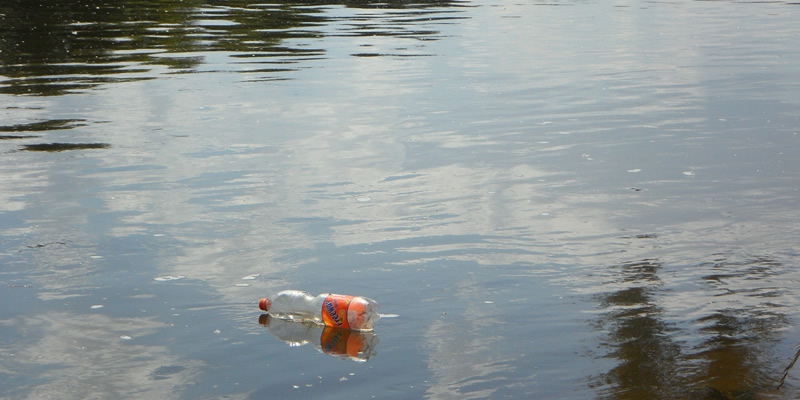
There is also more emerging evidence into the negative effects of climate change on metamorphosis. Decreasing water levels in ponds and lakes are causing frogs to undergo faster metamorphosis and leaves them more vulnerable to predation9.
You can read more about the effects of climate change on frogs, coming soon!
Remember to attribute photographs, videos or work where appropriate! This is not needed unless used online, but if you’re unsure please refer to the creative commons licence rules. For academic references and media credits of the images above, please refer to the next page.

